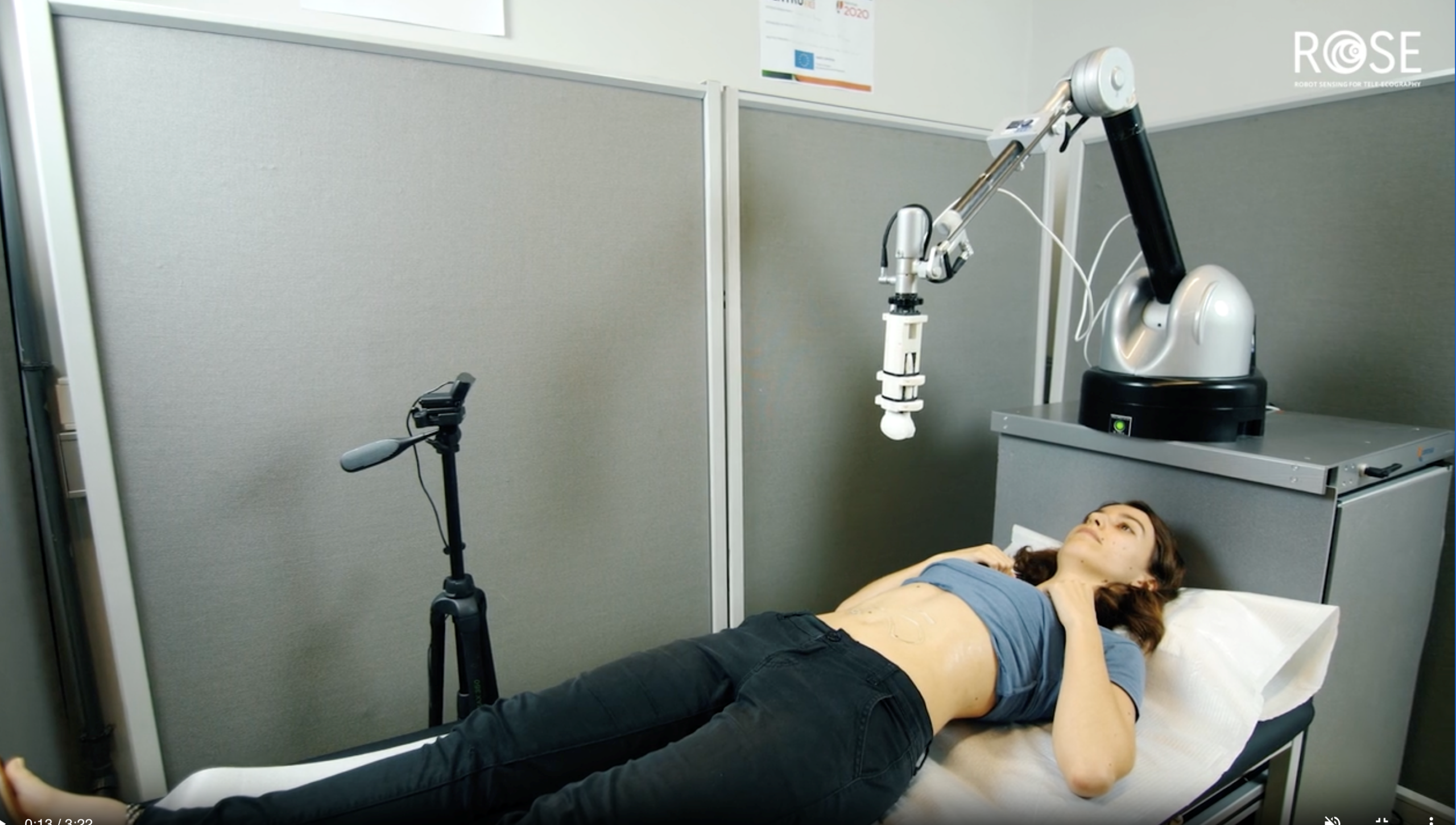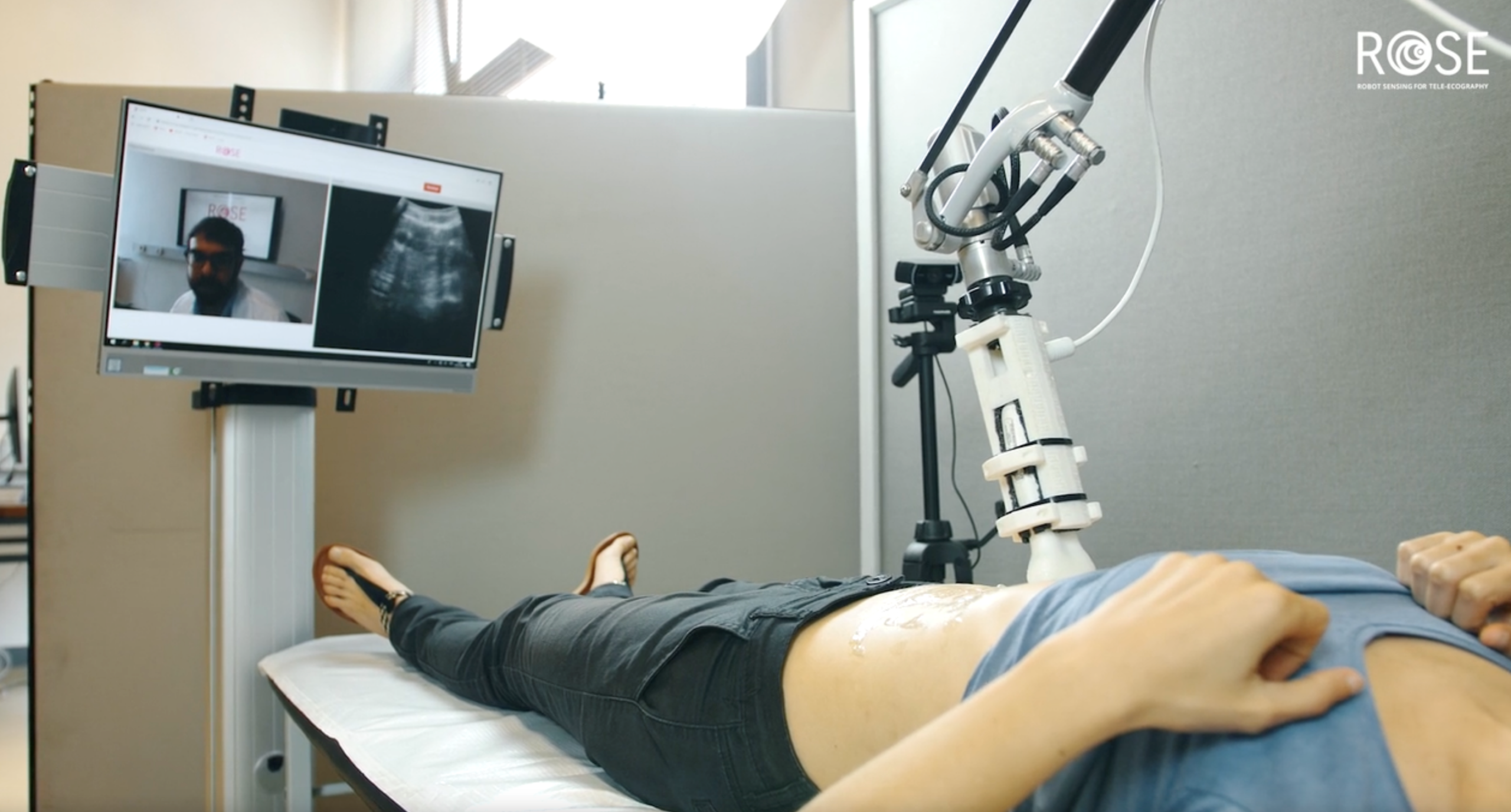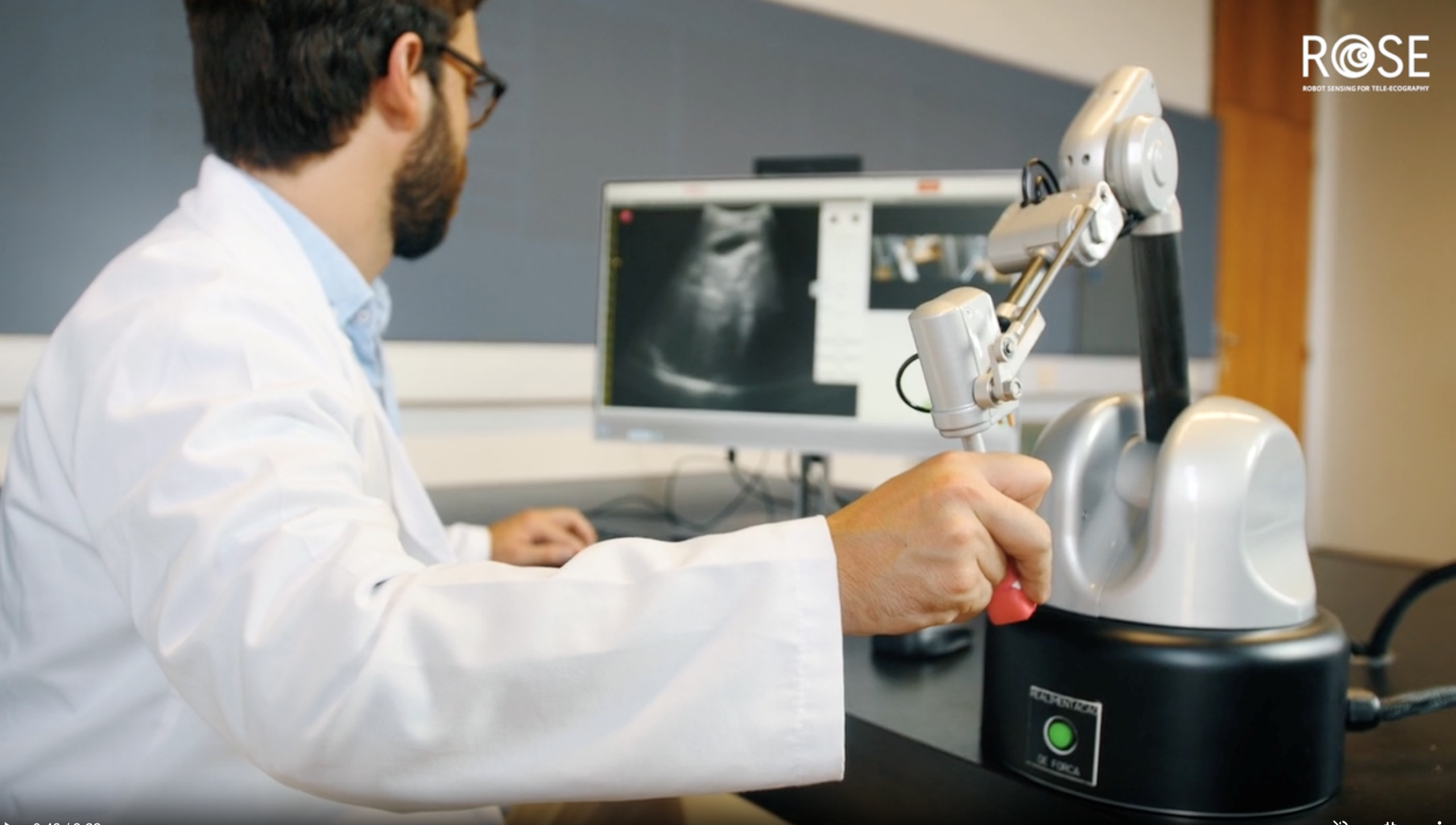The ROSE Project, a collaborative endeavor between WAITRO member Instituto Pedro Nunes (IPN) from Portugal and partners Sensing Future Technologies, IMACENTRO – Clínica de Imagiologia Médica do Centro, and Universidade de Coimbra, is a groundbreaking initiative aimed at advancing healthcare accessibility through innovative technology. ROSE is a solution for tele-ultrasound, utilizing ultralight robots and compliant tele-control with haptic feedback. This pioneering approach not only enables remote ultrasound exams but also has the potential to significantly reduce travel requirements and enhance access to this critical diagnostic tool in remote areas lacking a permanent radiologist presence.
The core of the ROSE project lies in its integration of cutting-edge technologies, including torque-controlled lightweight robots and compliant telecontrol with haptic feedback. This sophisticated combination allows for remote manipulation of the ultrasound probe, enabling clinicians to perform ultrasound examinations from a distance. By leveraging teleoperated robotic systems, the innovation seeks to bridge the gap between medical experts and patients in hard-to-reach locations, providing high-quality healthcare access without the need for extensive travel.
At present, the ROSE project has achieved significant progress in its development and practical deployment. It is currently being prepared for training purposes such as TrainR4U, a robot assisted blended learning program in abdominal ultrasound, where participants count with practicing tele-ultrasound examinations using the teleoperated robotic system. This initial deployment showcases the potential impact and benefits of the innovation, making strides toward improving healthcare accessibility in underserved areas.
One of the key highlights of the ROSE project is its potential to enhance medical training and skill transfer. Physicians in remote or rural areas can observe live ROSE examinations performed by remote experts, facilitating knowledge sharing and learning. Additionally, physicians have the opportunity to co-manipulate the ultrasound probe on the patient station while experts tele-control the system. This interactive training approach empowers medical professionals with the skills and expertise required for accurate and efficient ultrasound examinations.


The ROSE project aligns with several United Nations Sustainable Development Goals (SDGs). Goal 3 (Good Health and Well-being) is directly supported through improved healthcare access and early detection of medical conditions, potentially saving lives and enhancing overall well-being. Additionally, Goal 9 (Industry, Innovation, and Infrastructure) is promoted by fostering innovation in the medical technology sector, empowering healthcare professionals with advanced tools and capabilities.
Looking forward, the ROSE project has ambitious goals for its practical deployment and impact. Within the next five years, the innovation aims to expand its reach globally, with initial plans for implementation in EUR countries that already have education and training agreements with Portuguese Medicine Faculties. Demonstrating its international potential, the project has already conducted successful tests with connections from Portugal to Canada.
In terms of sectoral impact, the ROSE project has the potential to extend beyond its current domain in radiology. The innovation’s future goals include supporting other types of ultrasound examinations, such as cardio-thoracic or rheumatology exams. Furthermore, the innovation’s adaptability allows for exploration in other medical areas, such as dermatology, where minor adjustments to the end-effector could support tele-dermatology, enabling remote camera pose control by clinicians.
SDGs Impact Of The Project
The ROSE project relates to the following United Nations Sustainable Development Goals (SDGs):
Goal 3: Good Health and Well-being – It aims to improve healthcare access by providing remote ultrasound examinations, particularly in underserved areas, leading to better health outcomes through timely and accurate diagnoses.
Goal 9: Industry, Innovation, and Infrastructure – The project utilizes cutting-edge technologies like torque-controlled robots and telecontrol with haptic feedback, fostering innovation in the medical technology sector and enhancing healthcare infrastructure.
Goal 10: Reduced Inequalities – By enabling tele-ultrasound, it addresses healthcare disparities, extending medical expertise to remote regions and empowering patients with specialized examinations without extensive travel.
Goal 17: Partnerships for the Goals – The project’s global potential involves collaborations between medical faculties, hospitals, and technology developers to drive knowledge sharing and implementation in diverse regions.
Through its contributions to these SDGs, the ROSE project supports the United Nations’ broader agenda for sustainable development, aiming to improve healthcare, promote innovation, and foster inclusivity for a more equitable world.
Website related to the innovation: Rose (ipn.pt)
References for scientific publications:
Santos, luis, rui cortesão, and joão quintas. “twin kinematics approach for robotic-assisted tele- echography.” 2019 ieee/rsj international conference on intelligent robots and systems (iros). Ieee, 2019. Doi: 10.1109/iros40897.2019.8968481
Details

Date: 01/01/2017 – 31/12/2020
Location: Coimbra – Portugal
Project Partners : Sensing Future Technologies, Lda (Portugal), IMACENTRO - Clínica de Imagiologia Médica do Centro, S.A. (Portugal) , Universidade de Coimbra (Portugal), Instituto Pedro Nunes (Portugal)
- Collaborative Project
